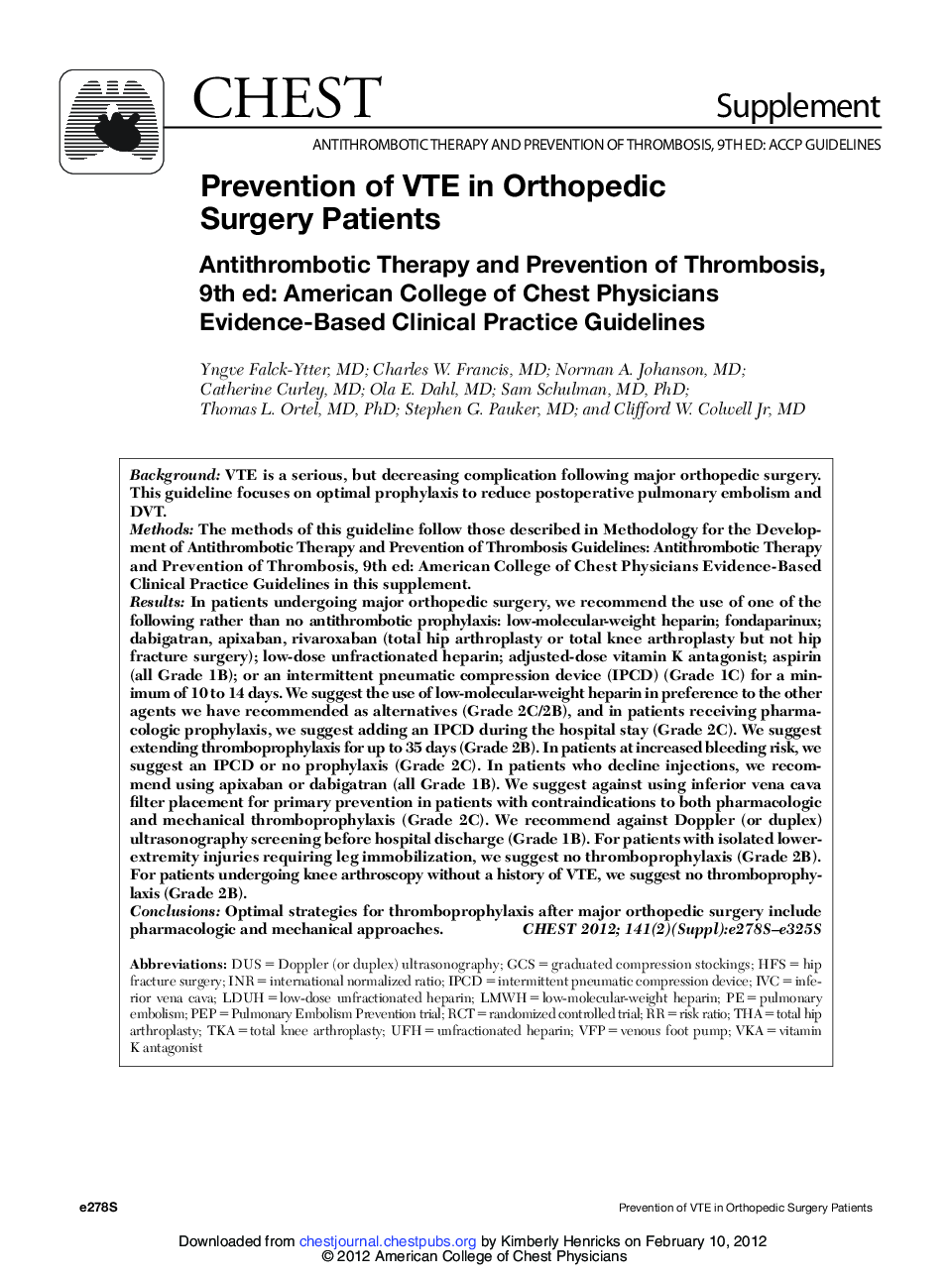| کد مقاله | کد نشریه | سال انتشار | مقاله انگلیسی | نسخه تمام متن |
|---|---|---|---|---|
| 2901309 | 1173349 | 2012 | 48 صفحه PDF | دانلود رایگان |

BackgroundVTE is a serious, but decreasing complication following major orthopedic surgery. This guideline focuses on optimal prophylaxis to reduce postoperative pulmonary embolism and DVT.MethodsThe methods of this guideline follow those described in Methodology for the Development of Antithrombotic Therapy and Prevention of Thrombosis Guidelines: Antithrombotic Therapy and Prevention of Thrombosis, 9th ed: American College of Chest Physicians Evidence-Based Clinical Practice Guidelines in this supplement.ResultsIn patients undergoing major orthopedic surgery, we recommend the use of one of the following rather than no antithrombotic prophylaxis: low-molecular-weight heparin; fondaparinux; dabigatran, apixaban, rivaroxaban (total hip arthroplasty or total knee arthroplasty but not hip fracture surgery); low-dose unfractionated heparin; adjusted-dose vitamin K antagonist; aspirin (all Grade 1B); or an intermittent pneumatic compression device (IPCD) (Grade 1C) for a minimum of 10 to 14 days. We suggest the use of low-molecular-weight heparin in preference to the other agents we have recommended as alternatives (Grade 2C/2B), and in patients receiving pharmacologic prophylaxis, we suggest adding an IPCD during the hospital stay (Grade 2C). We suggest extending thromboprophylaxis for up to 35 days (Grade 2B). In patients at increased bleeding risk, we suggest an IPCD or no prophylaxis (Grade 2C). In patients who decline injections, we recommend using apixaban or dabigatran (all Grade 1B). We suggest against using inferior vena cava filter placement for primary prevention in patients with contraindications to both pharmacologic and mechanical thromboprophylaxis (Grade 2C). We recommend against Doppler (or duplex) ultrasonography screening before hospital discharge (Grade 1B). For patients with isolated lower-extremity injuries requiring leg immobilization, we suggest no thromboprophylaxis (Grade 2B). For patients undergoing knee arthroscopy without a history of VTE, we suggest no thromboprophylaxis (Grade 2B).ConclusionsOptimal strategies for thromboprophylaxis after major orthopedic surgery include pharmacologic and mechanical approaches.
Journal: Chest - Volume 141, Issue 2, Supplement, February 2012, Pages e278S–e325S